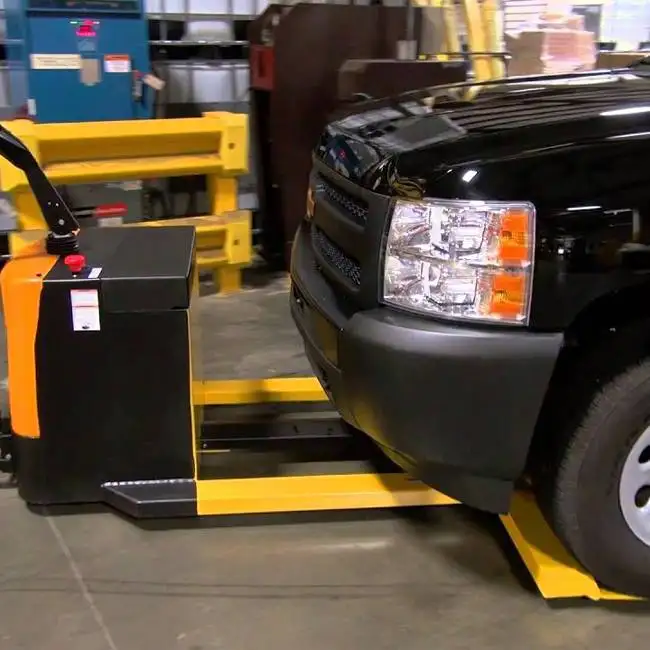

Here’s a request we get often: “I just launched my battery dolly for the new EV we are manufacturing, and I can’t get it to pass our internal safety standards. I’ve had to reduce the number of batteries on the dolly while spending more to buy extra dollies. Can you help me?”
It’s the perfect storm. As more EV vehicles are being produced, more EV batteries are needed. And because these batteries are heavier than typical vehicle batteries, the dollies moving them are heavier and harder to move. The result is a push force high above a typical standard push force of 45 pounds.
Luckily, you do have options to help you with this challenge. There are many factors that affect the push force of a battery cart or dolly that typically weighs between 2,500 pounds and 3,500 pounds. And most of these factors revolve around the casters. The wheel’s diameter, wheel material, and wheel width (all covered in this blog) as well as swivel offset, swivel section construction, and the cart’s caster placement (which we will cover in our next blog) all can play a key role in getting a loaded cart’s starting push force to a standard 45 pounds.
If there aren’t height constraints, then increasing wheel diameter is the easiest way to reduce the starting force of pushing a heavy cart. Going from a 6’’ diameter wheel to an 8’’ diameter wheel can improve push forces by 20% on average.
A harder wheel material will always have lower push forces – a steel wheel will roll easier than a urethane treaded wheel. This is because harder materials have a smaller contact patch (the patch of material in contact with the floor) which reduces the force required to begin rolling. The drawback to a harder wheel is that it can cause wear on concrete or other flooring types which then causes other safety and cost issues.
The other drawback to harder plastic or urethane wheels – in the 70-80 D durometer range – is that they are more likely to pick up debris. This negatively impacts the starting push forces. These two reasons are why most companies tend to stay with a softer urethane (85-95A durometer) treaded wheel in their facilities – Softer wheels don’t wear the floors and are less likely to pick up debris, which leads to longer wheel life.
When evaluating different urethane tires, urethanes with lower compression set and higher rebound will roll easier, though typically will have less toughness than other comparable urethanes with lower rebound. So it is finding the right balance between rollability and toughness for the application.
Wheel width is also an interesting variable to consider. The wider the wheel, the easier the wheel will be to start rolling. This is because the tire has less of a contact patch length because you are spreading it out over the width. When wheels are exactly the same in diameter and design, except one is wider than the other, then the wider wheel will start rolling easier. The issue comes in when paired into a swivel caster rig. As a wider wheel swivels around during a change in direction, the amount of scrubbing increases which will actually increase your overall push forces. The extra scrubbing is because the inner part of the wheel wants to rotate at a different speed than the outside part of the wheel when the caster is swiveling. This scrubbing can be negated by going to a split wheel design, with multiple independently rotating discs.